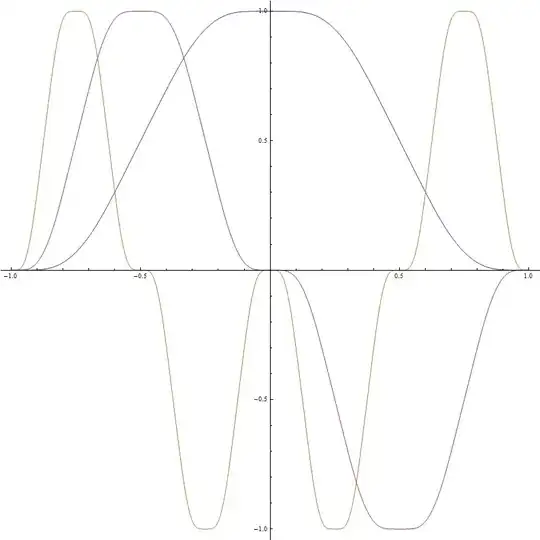Is there a closed form to the following recursive integration?
$$
f_0(x) =
\begin{cases}
1/2 & |x|<1 \\
0 & |x|\geq1
\end{cases}
\\
f_n(x) = 2\int_{-1}^x(f_{n-1}(2t+1)-f_{n-1}(2t-1))\mathrm{d}t
$$
It's very clear that this converges against some function and that quite rapidly, as seen in this image, showing the first 8 terms:

Furthermore, the derivatives of it have some very special properties.
Note how the (renormalized) derivatives consist of repeated and rescaled functions of the previous degree which is obviously a result of the definition of the recursive integral:

EDIT
I found the following likely Fourier transform of the expression above. I do not have a formal proof but it holds for all terms I tried it with (first 11).
$$ \mathcal{F}_x\left[f_n(x)\right](t)=\frac{\sin \left(2^{-n} t\right) \left(\prod _{k=1}^n \frac{2^{k+1} \sin \left(2^{-k} t\right)}{t}\right)}{\sqrt{2 \pi } t}$$
Here an image of how that looks like (first 10 terms in Interval $[-8\pi,8\pi]$):

With this, my question alternatively becomes:
What, if there is one, is the closed form inverse fourier transform of
$\mathcal{F}_x\left[f_n(x)\right](t)=\frac{\sin \left(2^{-n} t\right) \left(\prod _{k=1}^n \frac{2^{k+1} \sin \left(2^{-k} t\right)}{t}\right)}{\sqrt{2 \pi } t}$,
especially for the case $n\rightarrow\infty$?
